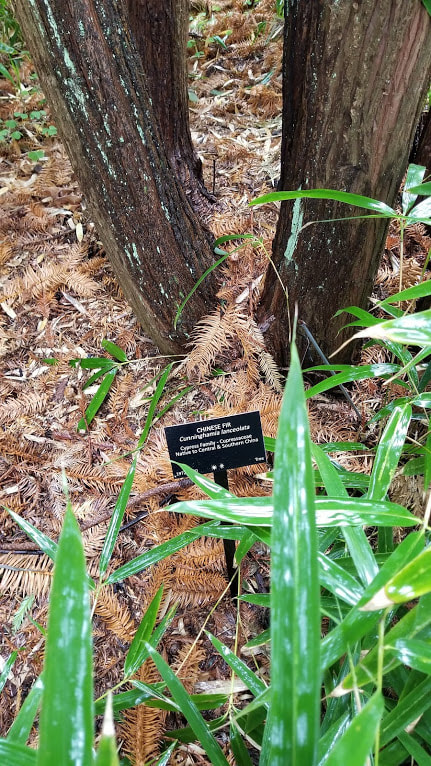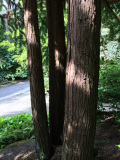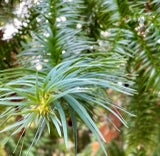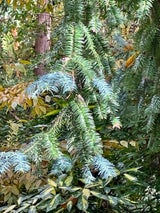- Plant IDs
- >
- ID By Type
- >
- Trees
- >
- Evergreen Trees
- >
- Conifers
- >
- Cunninghamia lanceolata & C. lanceolata 'Glauca'
Cunninghamia lanceolata & C. lanceolata 'Glauca'
Common name: Chinese fir
Cunninghamia lanceolata is native to Eastern Asia, and several specimens are found in the Sino-Himalayan Garden. Its stiff, blue-greenish, needle-like leaves form a spiral around the branch, which is quite flat. Its cones are similar to those of the redwood, with peltate (shield-like) scales on stalks. Cold will kill some of the leaves, and they may stay on the tree for a long time. It has been long valued as a source of timber in China. Archeological studies of ancient shipwrecks and Ming dynasty shipyards confirm the use of Cunninghamia in shipbuilding, with accounts of huge Ming Dynasty treasure ships and voyages to Africa by navigator Zheng He in the early 15th century.
From Erica's notes: In 1702, James Cunningham, botanist, explorer and surgeon for the East India Company, identified the China Fir, an interesting link between the Sequoia and Araucaria. The foliage is similar to the latter, but the cones differ in that there are three seeds to a scale, whereas the araucaria has only one. They remain on the tree after shedding their seeds, which ripen in one to two years. The foliage is retained for four to five years and drops off as branchlets. These trees are much valued for coffin-making, the wood being aromatic.
We have several specimens in the Garden, including the cultivar C. lanceolata 'Glauca' which has blue-tinged foliage. Sometimes the tree builds up a lot of dead branches inside, and the gardeners remove them with a rake.
'Glauca' tree photo taken by Tresa Horney, Oct. 2021
Other 'Glauca' foliage photos taken by Hughie Jones






